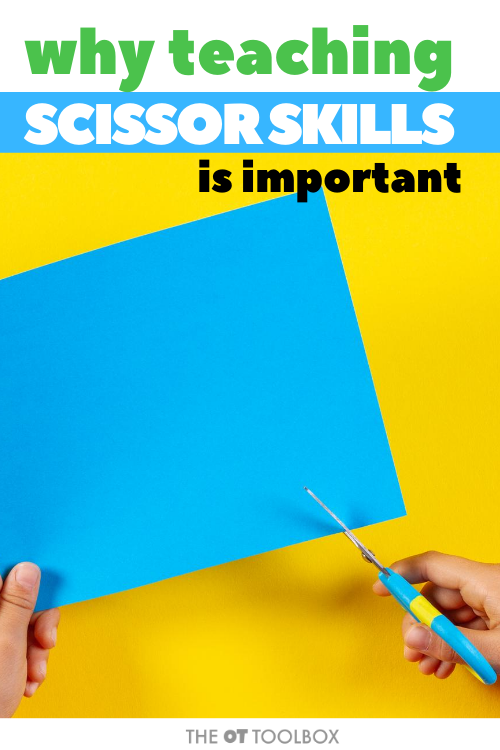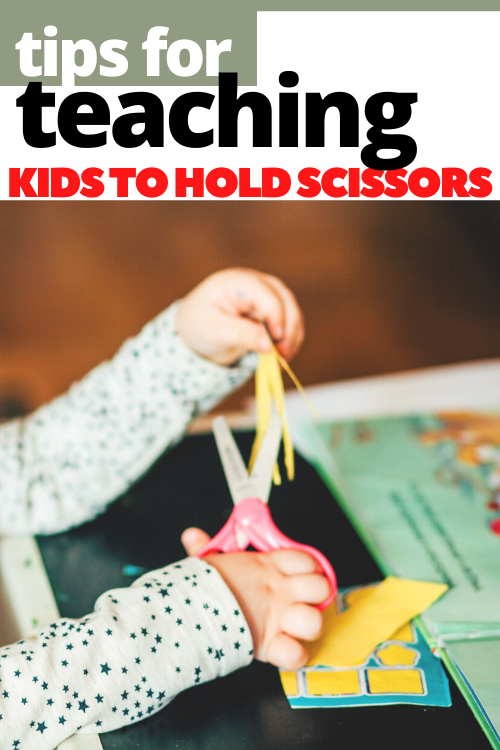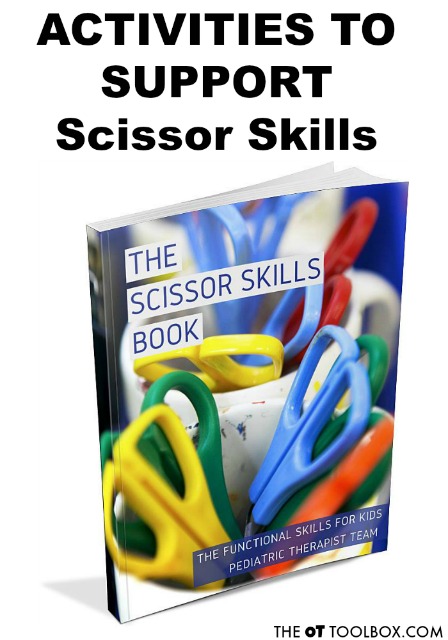Teaching kids to cut with scissors depends a lot on the type of scissors that are used. Ask any pediatric occupational therapist, and you will find recommendations for kid-friendly scissors that actually allow kids to cut paper. You know…the training scissors to introduce kids to scissor skills…the ones that don’t just tear through paper.
Choosing the best scissors for kids
When it comes to finding the best scissors for kids, there is a lot more to it than you might think. Cutting scissors need to fit the child’s hand and feel comfortable. They need to be safe and allow the child to learn to manipulate the scissors while cutting paper (and nothing else). They need to have molded handles that are easy to hold in the correct position. And they need to grow with the child so they can progress from cutting snips to shapes and multi-angled forms.
Teaching kids to cut with scissors is a progress. There are tips that can help along the way and there are strategies that can help a child succeed.
Having scissors and a strategy can help!

Why is cutting with scissors important?
When we teach kids the correct way to hold scissors, kids find so much more success in cutting shapes. You probably have seen the child that holds scissors sideways on the paper. They open and close the scissor blades but nothing happens.
Maybe you’ve seen the child that pushes the scissors through the paper. They tear and rip the page instead of cutting along the lines.
You might recall the child that holds the scissors with their elbow out and up in the air so they are cutting in toward their body instead of out and along the lines.
All of these positioning tactics lead to poor scissor skills and a frustrated kiddo.
Importance of Scissor Skills
When we show kids how to properly hold scissors we set them up for success. When we hand scissors that properly fit the child, we are providing the tools for accuracy.
Teaching kids to hold the scissors correctly allows them to position correctly so they can cut along the lines and feel success as they cut shapes.
When kids open and close the scissor blades, they gain precision of fine motor skills. And, those same fine motor skills allow the child to gain accuracy in cutting more complex shapes and forms.
Cutting with scissors builds bilateral coordination skills so they can use both hands together in a coordinated manner.
Cutting along lines offers a way to gain accuracy and precision in eye-hand coordination skills.
Not only are kids gaining developmental motor skills, they are completing a functional task, too. Teaching kids the proper way to hold scissors allows them to open and close the blades to cut along the lines with accuracy. They can snip the paper rather than tear. They can progress in scissor skill development from showing an interest in cutting with scissors to cutting complex shapes.
So how to teach kids the right positioning for cutting with scissors?

Positioning for scissor skills
First in addressing positioning for scissor skills is sitting posture. Make sure the child is seated at a desk or table with their feet flat on the floor and arms at a functional position. Using a table that is too high puts the elbows and shoulders into too much flexion.
Tuck the elbows into the sides. Many times, we see new scissor users holding their elbows way out to the sides as they attempt to bring the scissor work closer to their face and body. Actually, having the child tuck their elbows into their side offers more support so they can work on refining those fine motor skills.
Make sure the scissors are positioned on the hand correctly. Kids often times, place their thumb in the small loop of the scissor handles and push all of their other fingers into the larger hole. If possible, ensure that the thumb is in the smaller loop and the middle finger is placed in the larger loop with the ring ginger and pinkie finger tucked into the palm for support.
If that positioning isn’t possible, allow the child to use their middle, ring, and pinkie fingers in the larger loop.
Be sure that the scissors are positioned perpendicular to the paper. When the scissors tilt sideways due to upper body positioning, the paper tends to tear rather than cut.
All of these tips, and much more are available in The Scissor Skills Book, created by an occupational therapist and physical therapist team that covers all things development and motor skills needed for cutting with scissors.
Scissor Skills Curriculum
So, if working on scissor skills, positioning, and building scissor accuracy is something you are working on with kids, then you are going to love this item!
This scissor book offers step by step strategies to support development of scissor skills. It’s a therapist’s look at scissor skills curriculum using a developmental approach to help with positioning the scissors so kids can cut along lin



